Drum roll please for the winners of PENN Fishing giveaway of Three Prevail PRESF1530S10 Surf Rods. Once again I would like to thank folks from PENN Fishing for making this possible. There were ,gasp, 921 entries and we had to choose three randomly.
The winners are
Jack Mcgurin mcjack1@comcast.net
Jeff Plummer plummer.jacts319@gmail.com
Andy K jackslrf@gmail.com
all winners, you MUST contact us at info@surfcastersjournal.com with your shipping address which we will forward to the folks at PENN Fishing
Congrats to all winners
I just read the latest blog post by Charlie Witek and found it fascinating, educational and entertaining. No author I’ve ever read has the ability to lay out the world in front of you so clearly. I think you guys should visit his blog at http://oneanglersvoyage.blogspot.com/ and subscribe to recive update anytime he posts something.
Here is his latest piece
Sunday, August 31, 2014
By Charles Witek http://oneanglersvoyage.blogspot.com/
YES, FISH EAT OTHER FISH (AND HAVE, SINCE THE ORDOVICIAN)
I was reading through the Draft Addendum IV to Amendment 6 to the Atlantic Striped Bass Interstate Fishery Management Plan when a somewhat strange passage caught my eye.
It came in Section 2.2.3 of the Draft Addendum, which is entitled “Ecosystem Considerations,” and it said
“When fishery management changes are being contemplated, food web relationships should be considered…Striped bass are predators of other Commission managed species, including weakfish and shad and river herring. As the striped bass population grows the demand on prey species also increases. The increased demand on prey species may have impacts on those species undergoing rebuilding plans. The current addendum’s goal of reducing fishing mortality to target levels may impact predation on other ASMFC-managed species.”
I don’t have any problems with the premise that striped bass eat fish—that’s certainly true—but I do have concerns about the overall tone of the section.
Because the best that I can tell, fish have been eating other fish since the Ordovician Period, about 450 million years ago; at least that’s when the first remains of presumably jawed and piscivorous sharks appear in the fossil record.
Bony fish (as opposed to the cartilaginous sharks) started eating other fish about ten million years later, when the long-extinct Acanthodians appeared on the scene in the early Silurian.
In his book Discovering Fossil Fishes, Dr. John G. Maisey of the American Museum of Natural History noted that
“The developmental and anatomical complexity attained by gnathostomes [i.e., jawed animals] has been relatively stable at least since the Silurian. We can view the rise of the gnathostomes as a second punctuated event, followed by more than 400 million years of relative stasis.
“It is quite remarkable that the basic diversity of jawed craniates became fixed so early in their evolution. Sharks, ray-finned fishes and lobe-finned fishes all appeared about 400 million years ago and have survived to the present day. Conservatism of design is striking…”
In other words, fish have been eating each other on a regular basis for a very long time. Yet somehow, they survived—in fact, thrived and radiated out into an ever-changing plethora of species—for hundreds of millions of years, even though for all but a tiniest fraction of that time, predators existed at far higher levels than they did today—at 100% of their spawning potential, the level of an unfished stock.
There were no people around to control predators’ “demand on prey species.” And there was no worry about predators affecting stock rebuilding plans, because with no people around to overfish forage fish stocks, there were no such plans and no need for rebuilding in the first place.
So let’s put the blame where the blame belongs, and stop blaming striped bass—or any other species—for fisheries problems.
If we’re talking about a lack of weakfish, let’s talk about ASMFC’s refusal to accept scientific advice to put a moratorium in place to assist in their rebuilding.
After being told by ASMFC’s Weakfish Technical Committee that
“The main discussion was a moratorium is more than likely the best way to go at this time…”
and public comment supported such moratorium by a two-to-one margin, ASMFC’s Weakfish Management Board heard comments such as those of Tom Fote, the current governor’s appointee from New Jersey, who said
“…I’m looking at a situation that doesn’t basically shut down a complete fishery and basically allow the person, if he catches a weakfish of a lifetime or something like that or the kid on a beach actually catches a weakfish on that rare occasion, they can go home with one weakfish.
“…at least they’ll have, you know, one fish to take home…
“You know, we also talk about we’re supposed to build a sustainable fishery for a sustainable industry. If you start closing down both those industries, it takes a long time for that industry to recover…”
and seemed to consider such argument reasonable. The Management Board rejected both the Technical Committee’s comments and their endorsement by the public, and left both the recreational and commercial fisheries open, although at much reduced harvest levels.
They didn’t seem to consider the possibility that, if you keep taking fish out of an already badly depleted weakfish stock, the stock will take at least as long to recover as the fishing industry—which, in the end, at least has many viable alternatives to harvesting weakfish.
Weakfish, on the other hand, have no alternatives if they get caught and die.
And now, a lot of the same folks who sat on that management board apparently want to blame the striped bass for the weakfish’s problems…
In the case of American shad, Amendment 1 to the Interstate Fishery Management Plan for Shad & River Herring noted, as early as 1998, that
“Historically, American shad (Alosa sapidissima), hickory shad (Alosa mediocris), alewife (Alosa pseudoharengus) and blueback herring (Alosa aestivalis) (collectively termed alosines) were extremely important resource species and supported very large commercial fisheries along the east coast of both the United States and Canada…large declines in commercial landings were perceived as an indication that management action would be required to restore alosine stocks to their former levels of abundance…”
However, as is so often true with ASMFC plans, managers did not take decisive steps to reduce harvest, and declines continued. ASMFC allowed many of the river-specific stocks to decline so badly that, in the case of shad in New York’s Hudson River, the latest stock assessment found that
“Over the last 20 years, the Hudson River stock of American shad has shown consistent signs of excessive mortality on mature fish…high adult mortality was caused by fishing and that this excessive fishing has now affected recruitment.
“…Results of this fishing pressure has left the stock in a historically depressed condition with high uncertainty regarding its recovery. Few year-classes currently remain at high enough abundance to rebuild the spawning stock.”
Twelve years passed, while “high adult mortality caused by fishing” continued to drive down the stocks in the Hudson and elsewhere, before ASMFC finally decided to adopt more effective measures in 2010. Unfortunately, by then things had gotten so bad that, at least in the Hudson, there is now “high uncertainty” regarding the stock’s recovery.
Yet ASMFC has the temerity to suggest that striped bass are to blame…
In the case of the alewife and blueback herring—the “river herring” referred to in the shad and river herring management plan—ASMFC decided merely to monitor the stocks—effectively, to just watch them decline—in 1989.
It took them two full decades, after runs in many rivers had all but disappeared and the Natural Resources Defense Council had filed an ultimately unsuccessful petition to have river herring listed under the Endangered Species Act, to finally require states to take regulatory action in Amendment 2 to the Interstate Management Plan for Shad and River Herring.
But, once again, ASMFC wants to blame striped bass for river herring problems…
Yes, striped bass eat some weakfish, American shad and river herring. They’re opportunistic feeders, which means that they eat most of the species that ASMFC manages—and a lot that it doesn’t—at some point in their travels along the coast. But they’ve been doing that for millenia before Henry Hudson sailed up his eponymous river, where so many big stripers still breed.
Yet there is no indication that the bass posed mortal threat to weakfish, herring or shad before the first waves of colonists came over from Europe and began to “save” such fish from striped bass (and to save other prey from every other predator that, with a bit of work, could be converted into food, funds or fertilizer).
Somehow, before Europeans arrived to catch the ravenous striped bass (and everything else) with their nets, hooks and lines, “unprotected” weakfish, shad and herring still managed to thrive. Before the otter trawl, haul seines, purse seines, pound nets, gill nets, fykes and baited lines, striped bass, river herring, weakfish and shad managed to live in a sort of harmony that allowed them all to exist at or near 100% of their spawning potential (although the oldest residents of the east coast, who walked there all the way here from Siberia, did kill a few).
And it wasn’t because the striped bass had been vegetarians before the white man arrived on this coast.
We are far more effective predators than the striped bass could ever hope to be, and we compete with them for every forage species. Yet when forage declines, it’s always the striper’s fault.
It’s not a pattern unique to striped bass. On every coast, we hear the same arguments.
In Chesapeake Bay, and down in North Carolina, the talk is all about blue crabs being killed by red drum, with one fish wholesaler saying
“If they don’t do something about this fish population and restoration of this habitat, I don’t see where crabs are going to have a chance.”
Down in the Gulf of Mexico, you hear folks talking about red snapper eating everything else on the reef.
Perhaps the best story came from a former executive director of the Coastal Conservation Association’s Florida chapter, who related a story about being at a shrimp bycatch hearing in Panama City when a woman wandered up to the microphone and said
“You all are trying to stop bycatch, but I’ll tell you that bycatch is good. Back in the old days, we didn’t worry about bycatch. We caught jacks and mackerel and things, and there was plenty of mullet and bait and everything was fine. But now you’re stopping the bycatch, and the fish are eating everything so that there’s no bait around, and the pelicans are starving.
“And that’s why you’ll see the pelicans flying around and eating stray cats on the street in Panama City!”
It’s no less credible than the other tales, which are all aimed at convincing regulators to let fishermen do nature a “favor” and help drive down populations of striped bass, red drum or whatever the species in question might be, so that they can be as depleted as their forage and “balance” can be restored.
Of course, cutting back harvest and restoring the forage base is never a viable option…
That sort of thinking is probably understandable when it comes from folks looking out for their wallets.
But when it comes from folks who are supposed to be looking out for our fisheries, it’s just not excusable.
and a little craziness at the end..possibly the craziest surf fishing video ever
[youtube]https://www.youtube.com/watch?v=ob5l1lkV-pg[/youtube]

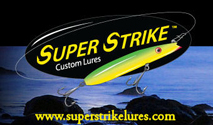

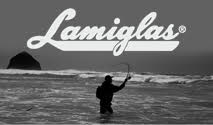
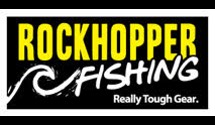

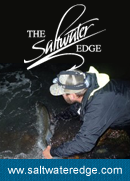
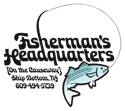


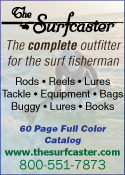


Best news I have had all year thanks Z 🙂
Cant wait to get out and put this baby through her paces!
MANY thanks
↓Andy
Wow, I’m excited, I have a Penn Prevail 11′ casting surf rod, this 10′ Spinning will take my game to a higher level! 🙂 Can’t wait to break it in! (slip a decent spinning reel in the shipper will ya? ) 🙂
↓THANKS!
Great article! Join Menhaden Defenders people! Most important fish in the sea. Stripers don’t get to be cows just eating clam worms. Protect your local forage fish from Russian cat food factory ships. This is our fishery to take care of.
↓This will be a nice addition to my Penn lineup. Loyalty pays off with a little luck. Majority of my equipment iis Penn and I have a Penn decal on the rear window of my truck. Penn gear gives gives you value at a fair price point. I know some friends who will be jealous. Thank you.
↓Congrats to the winners and thanks for the chance . Great article. You know that feeling you get when you know your going to get screwed. That’s how I feel every time I read an article on bunker and bass. I feel everything we as conservative fishermen are trying to do to protect and preserve a species is for naught. That there’s a million more going in the other direction and they’re going to win. I support Menhaden defender’s and I’ll be going to the meeting in Stony Brook but think it is just going to be a waste of time money and gas.
↓Congrats guys! And thanks for the chance SJ and Penn! I won last year and love my Prevail! Thanks again!
↓congrats to the winners
↓Thanks for sharing the article. Also, congrats to the winners!
↓